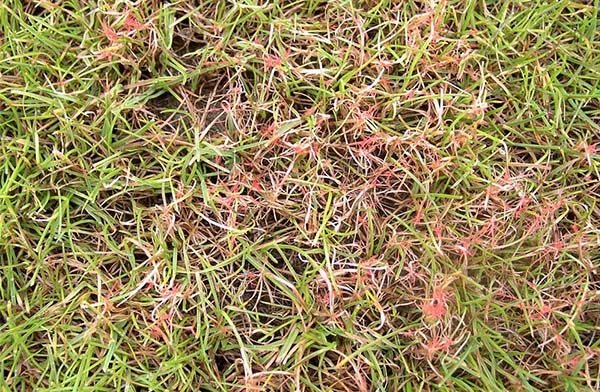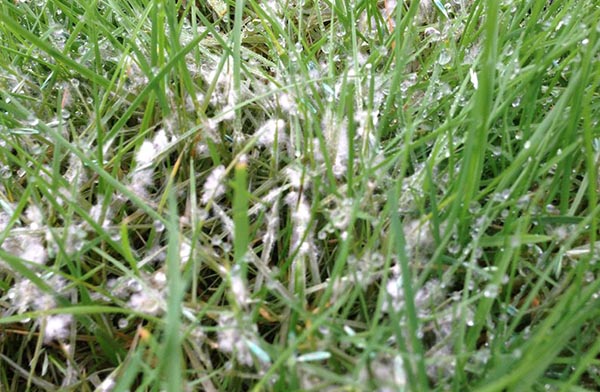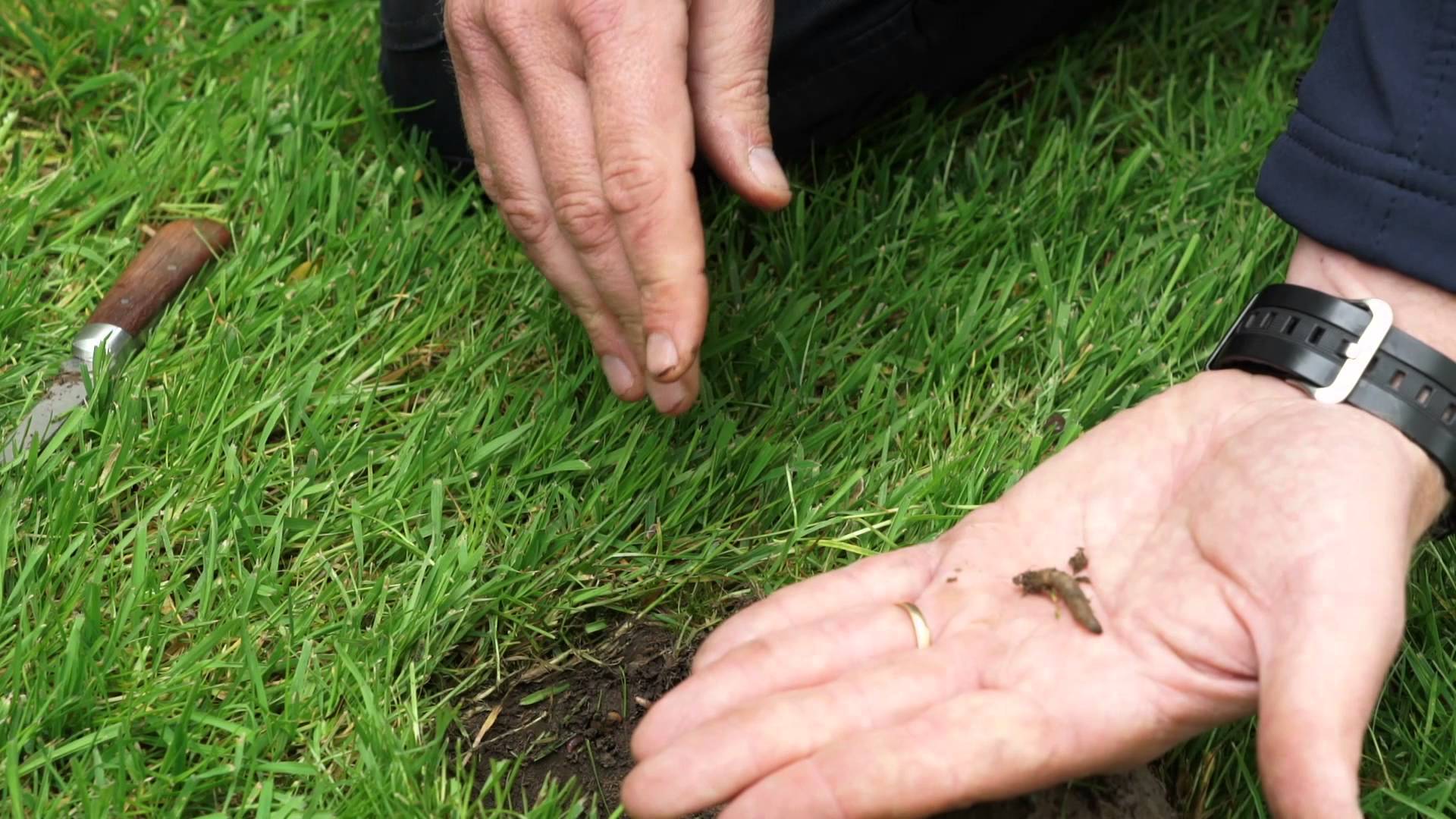Lawn Problems
There are a wide variety of lawn diseases and pests. In many instances having a robust lawn care plan in place will help to prevent issues occurring through good practices. However, if you do feel you have a specific problem rest assured Lawnresponse will be able to help.
The following are some of the more common issues.

Red Thread
You might spot red thread from May or June onwards during periods of high humidity. It will show on your lawn as small, irregular-shaped patches of grey coloured grass with a reddish tinge to the diseased leaf.
To help eradicate red thread it is important to have good lawn care practices in place. Ensuring regular mowing with a sharp blade, aeration and thatch control are all vital to preventing this disease. However, in some cases it may also be necessary to apply a fungicide. Lawnresponse can do this in a safe and effective manner.

Fusarium
Fusarium often appears between September and March as temperatures begin to drop. Unlike red thread, fusarium can be deadly to your grass and can act very quickly. Fusarium will appear as small orange/yellow patches on your lawn with fine white strands on the surface of the affected area. Fusarium can be caused by grass being kept too short, soil compaction, excess thatch or dampness.
To help prevent fusarium good lawn care practices including aeration and thatch control again apply. A treatment of ferrous sulphate can work in the short term, as can keeping as much moisture as possible off the grass during the autumn and winter. However, to stop the disease from spreading a chemical treatment will often be needed. Any damaged grass may also require removing or replacing

Leatherjackets
Leatherjackets are the larvae of crane fly (daddy long legs). The cycle begins as adult eggs are laid in the soil during the autumn. Weeks later these hatch and the grubs live in the soil, feeding on grass roots, until winter comes and then again in the spring, before eventually emerging as adults.
You can spot leatherjacket activity in the form of small patches of brown dying grass. However, more damage is often caused by other animals digging for the grubs as a source of food.
Leatherjackets can be controlled through both physical and biological means.
Your Lawnresponse technician will be able to advise on the best approach.
Free Lawn Check
These are only some of the lawn problems which can cause damage to your lawn. Others which can occur include rust, brown patch and mildew. If you have any concerns arrange a free lawn health check today.
